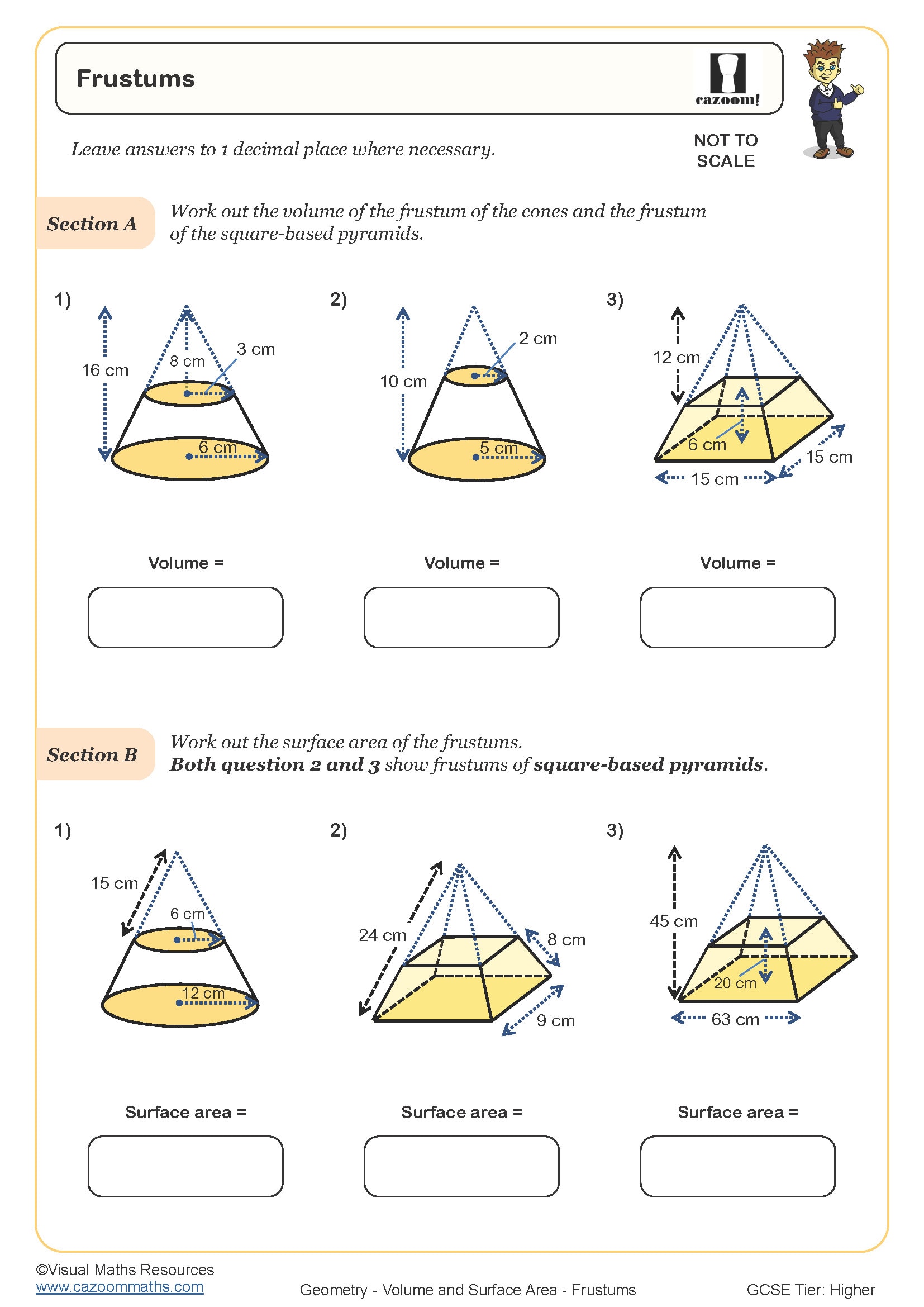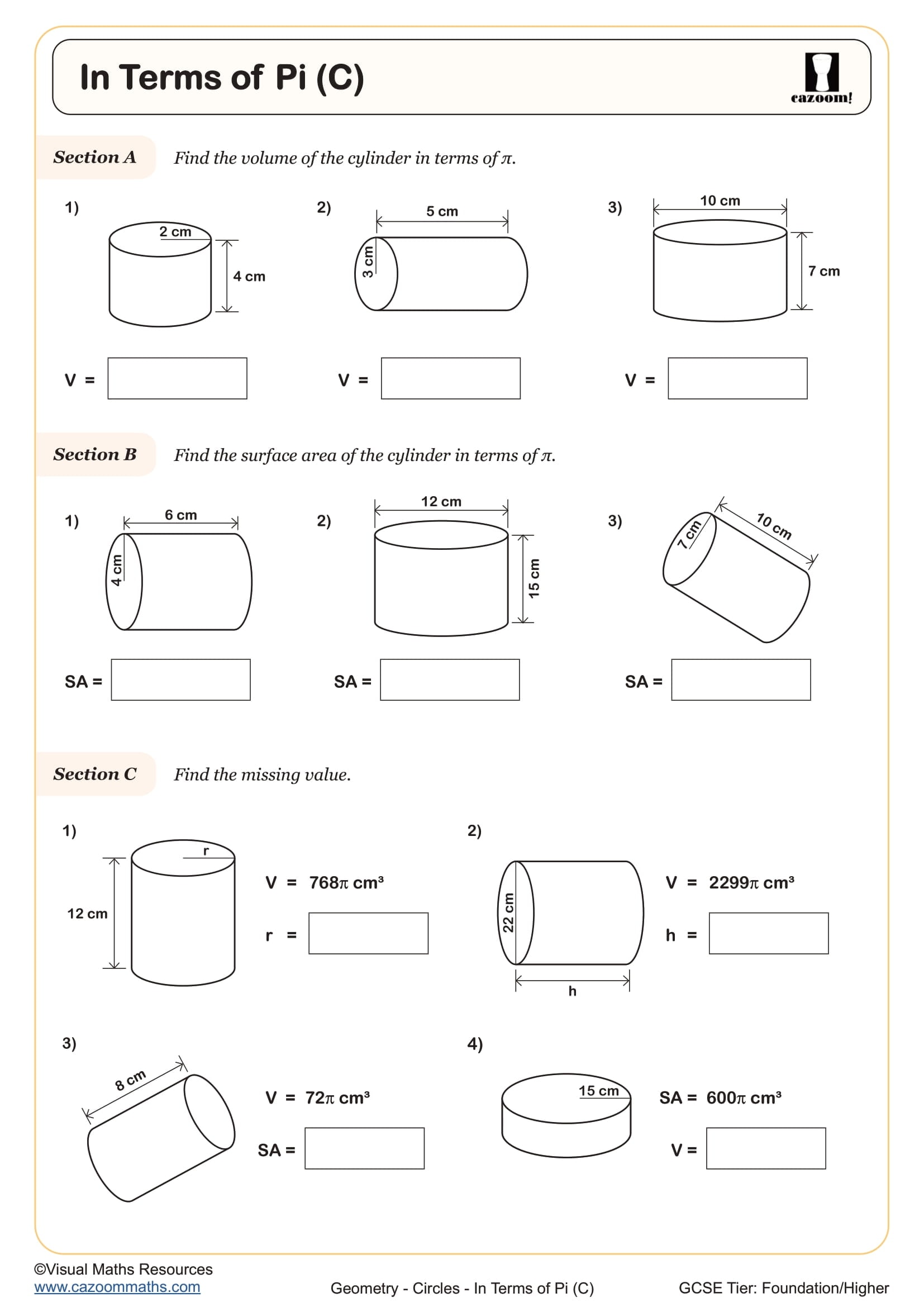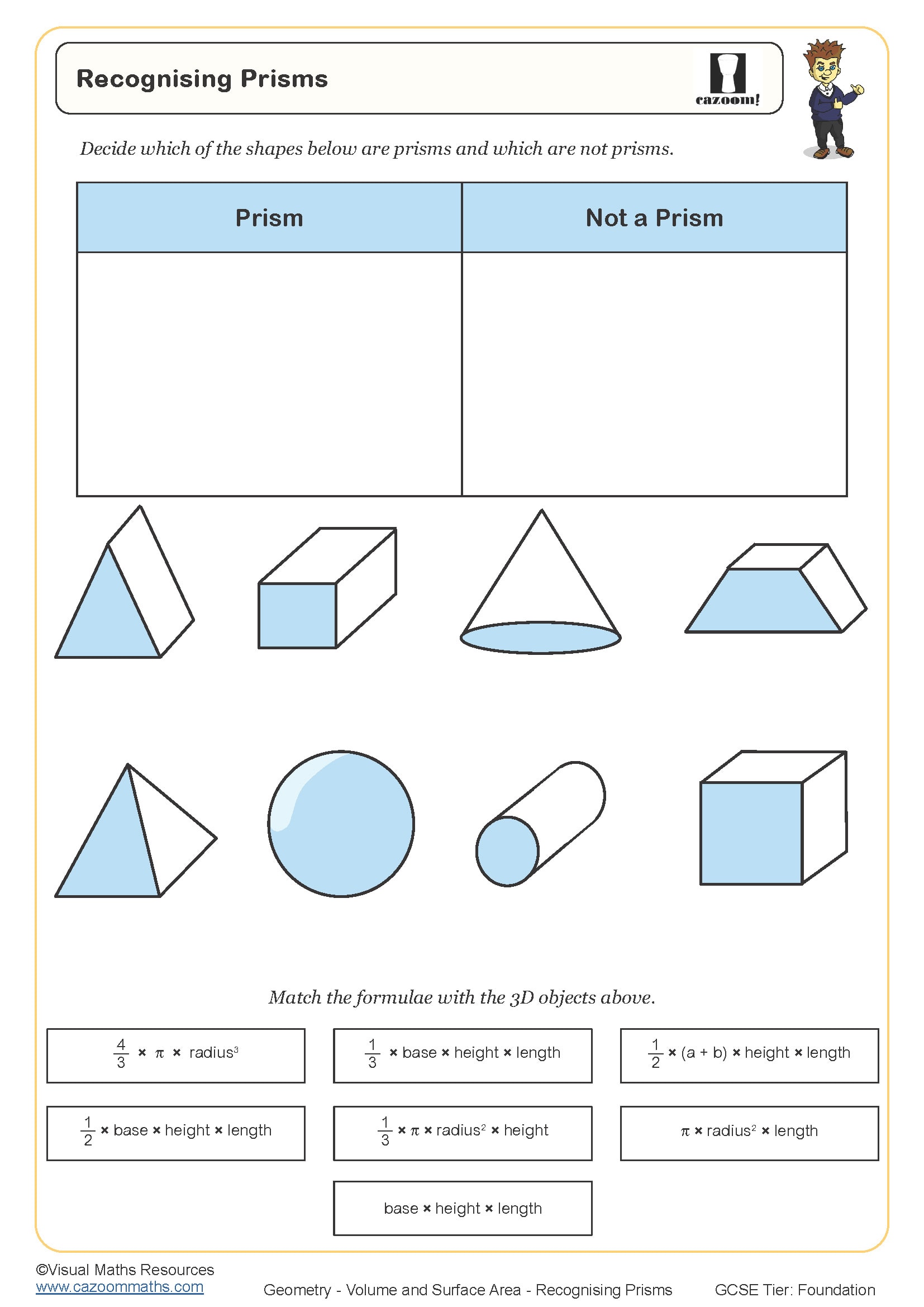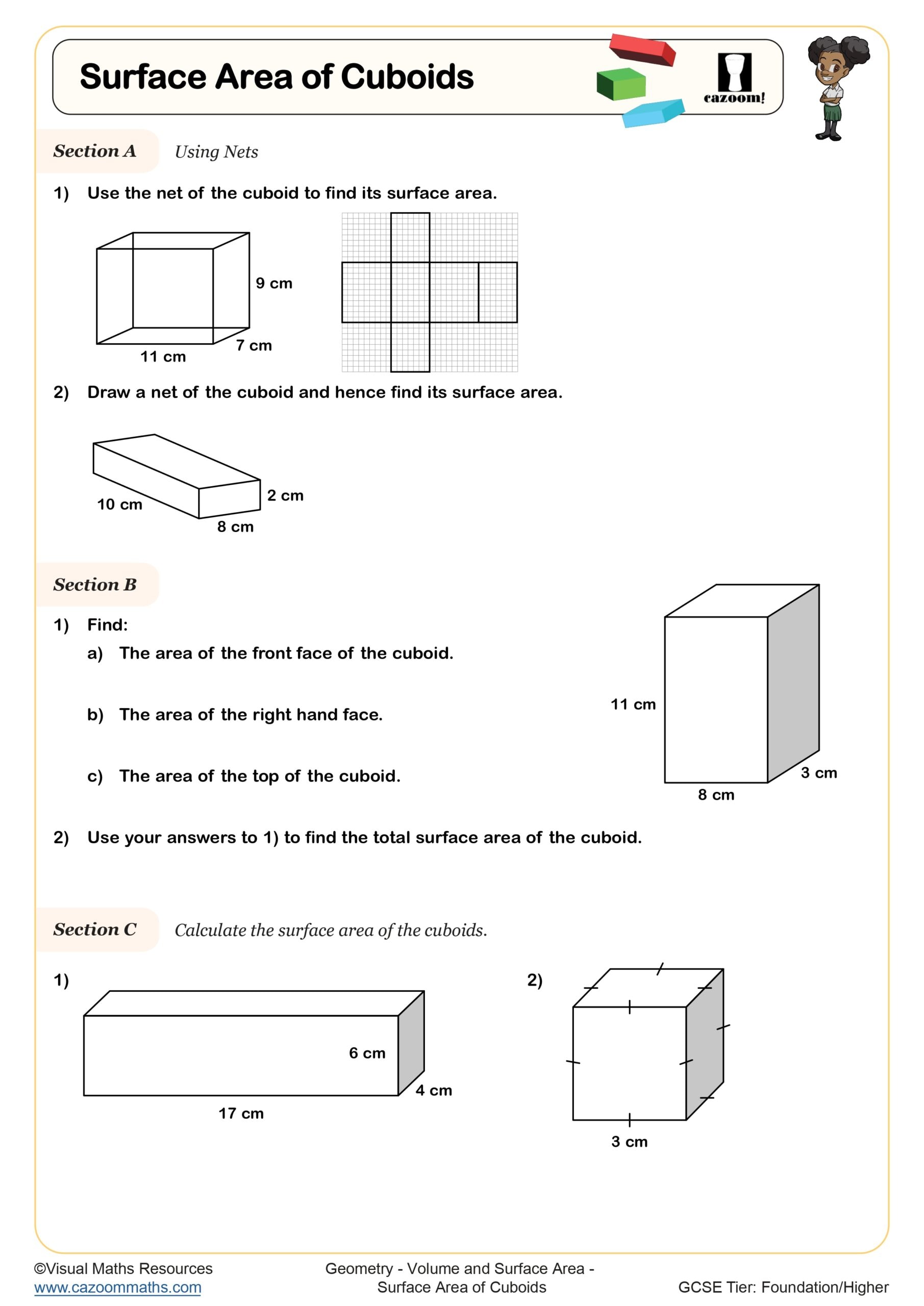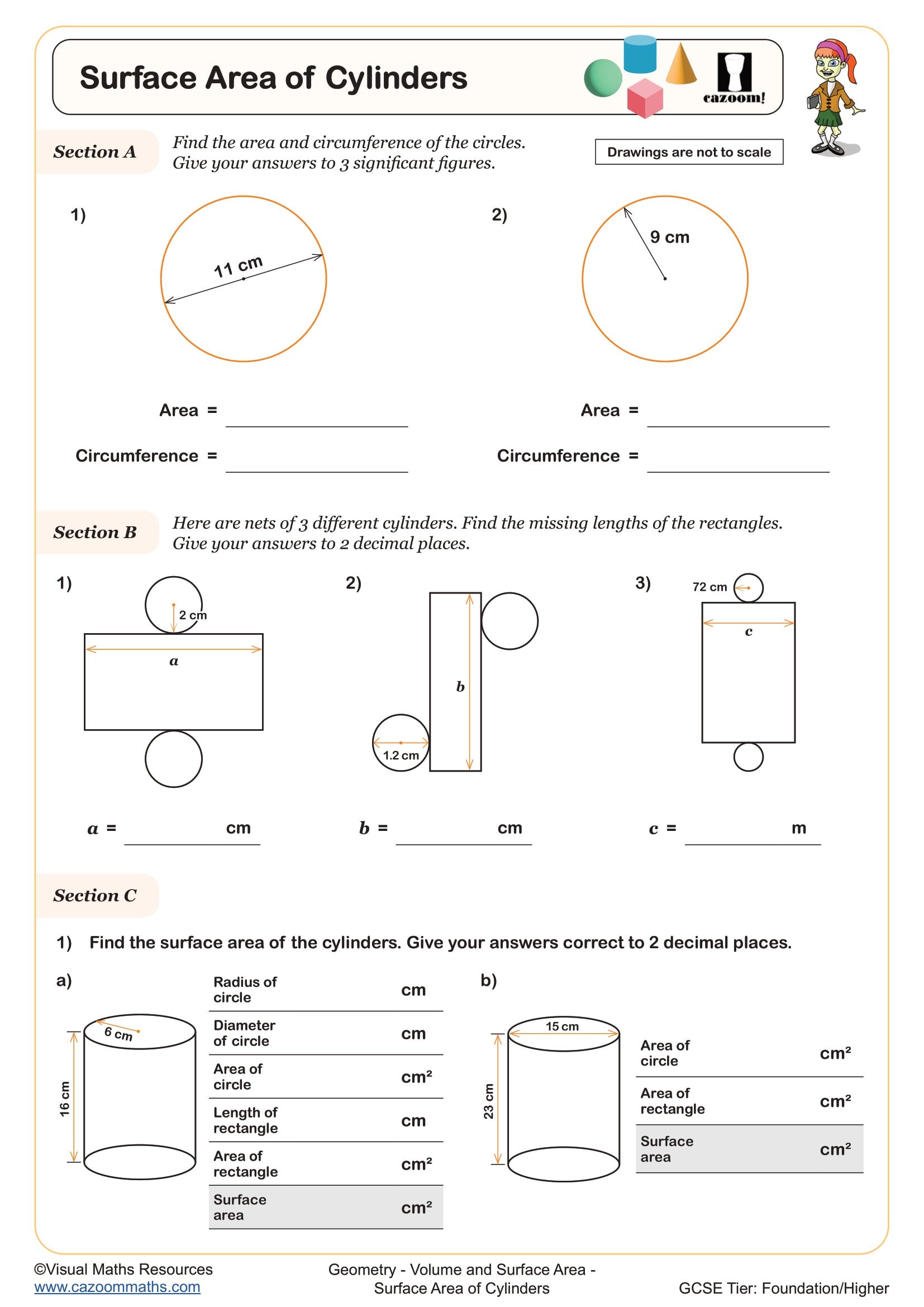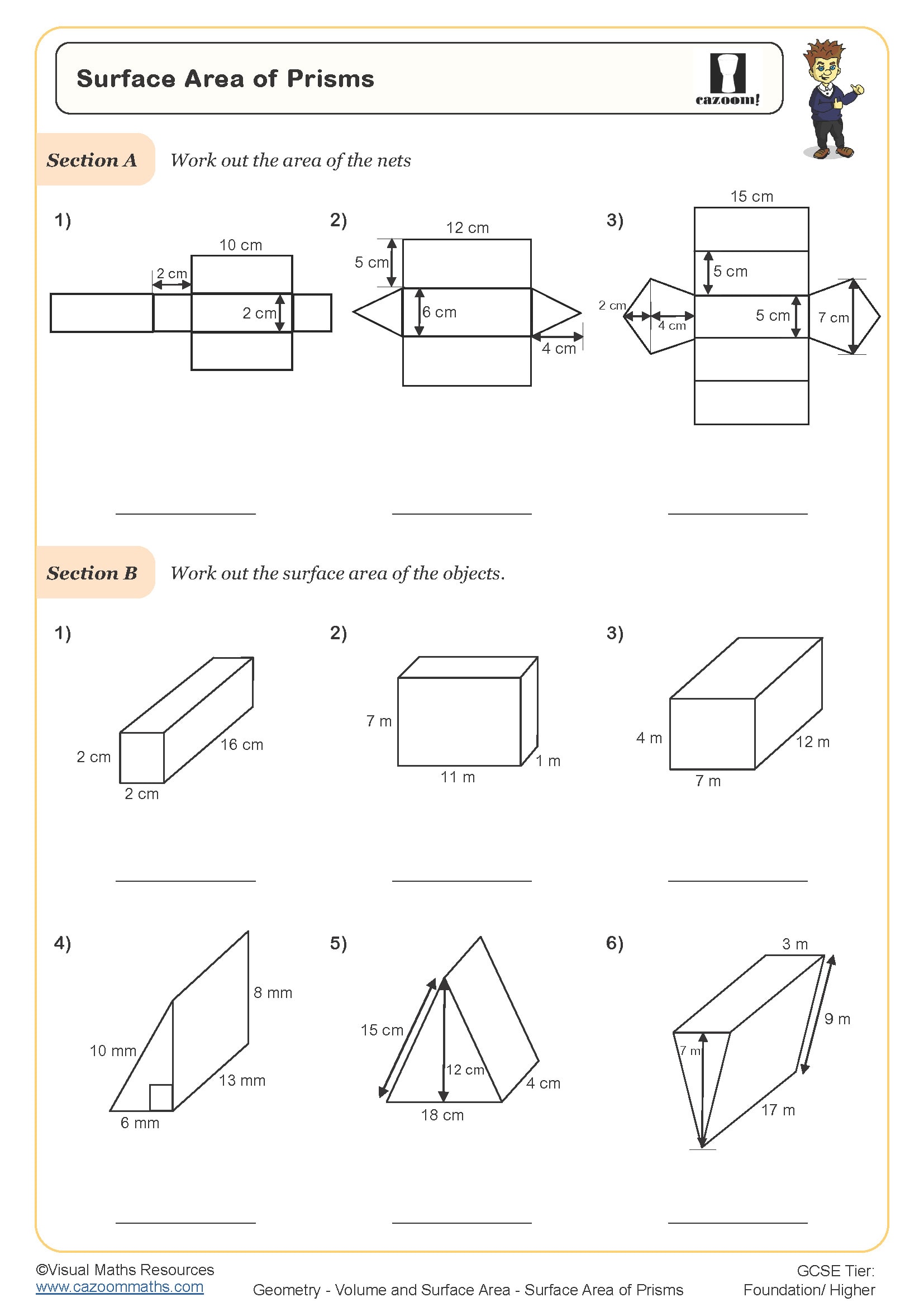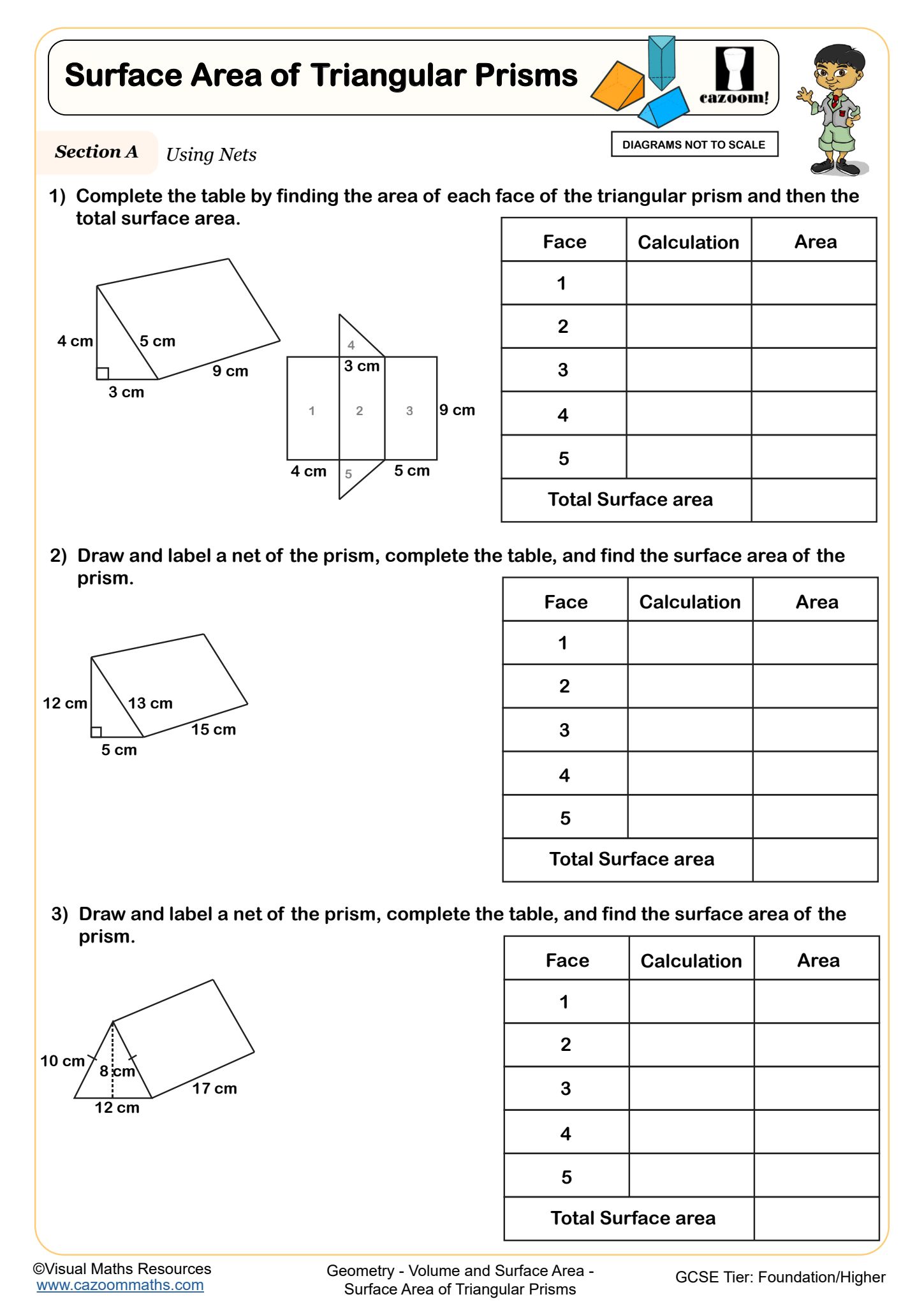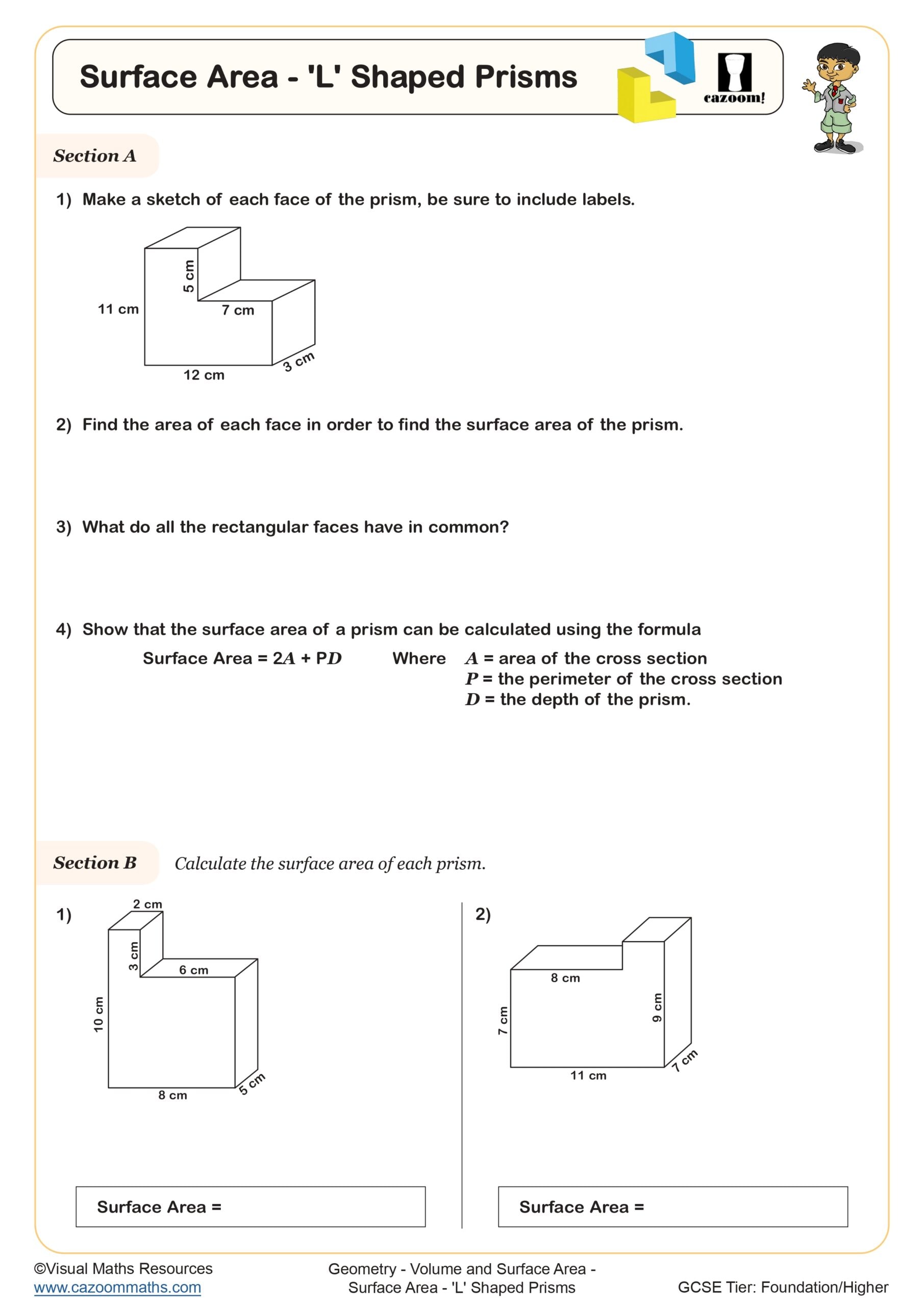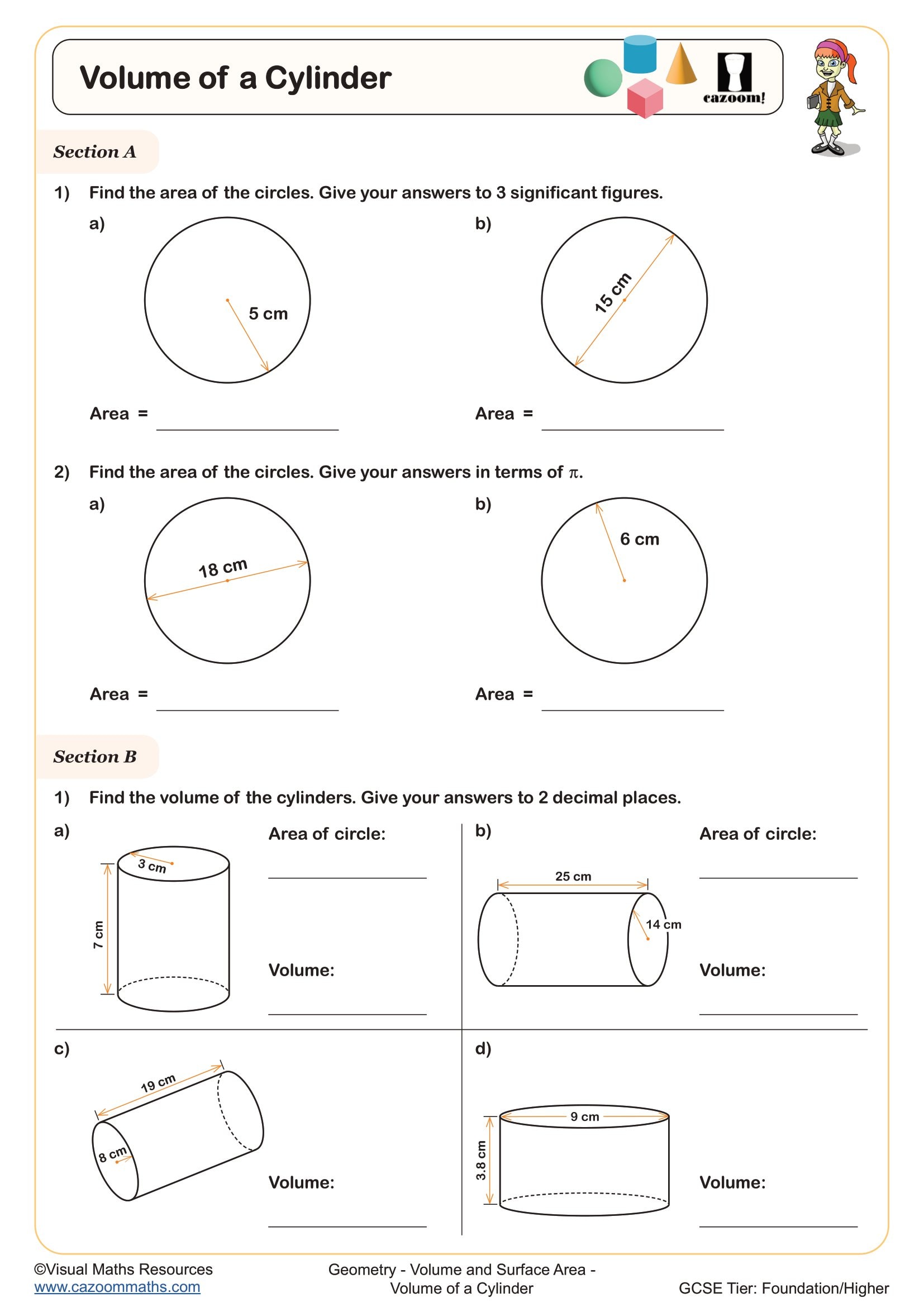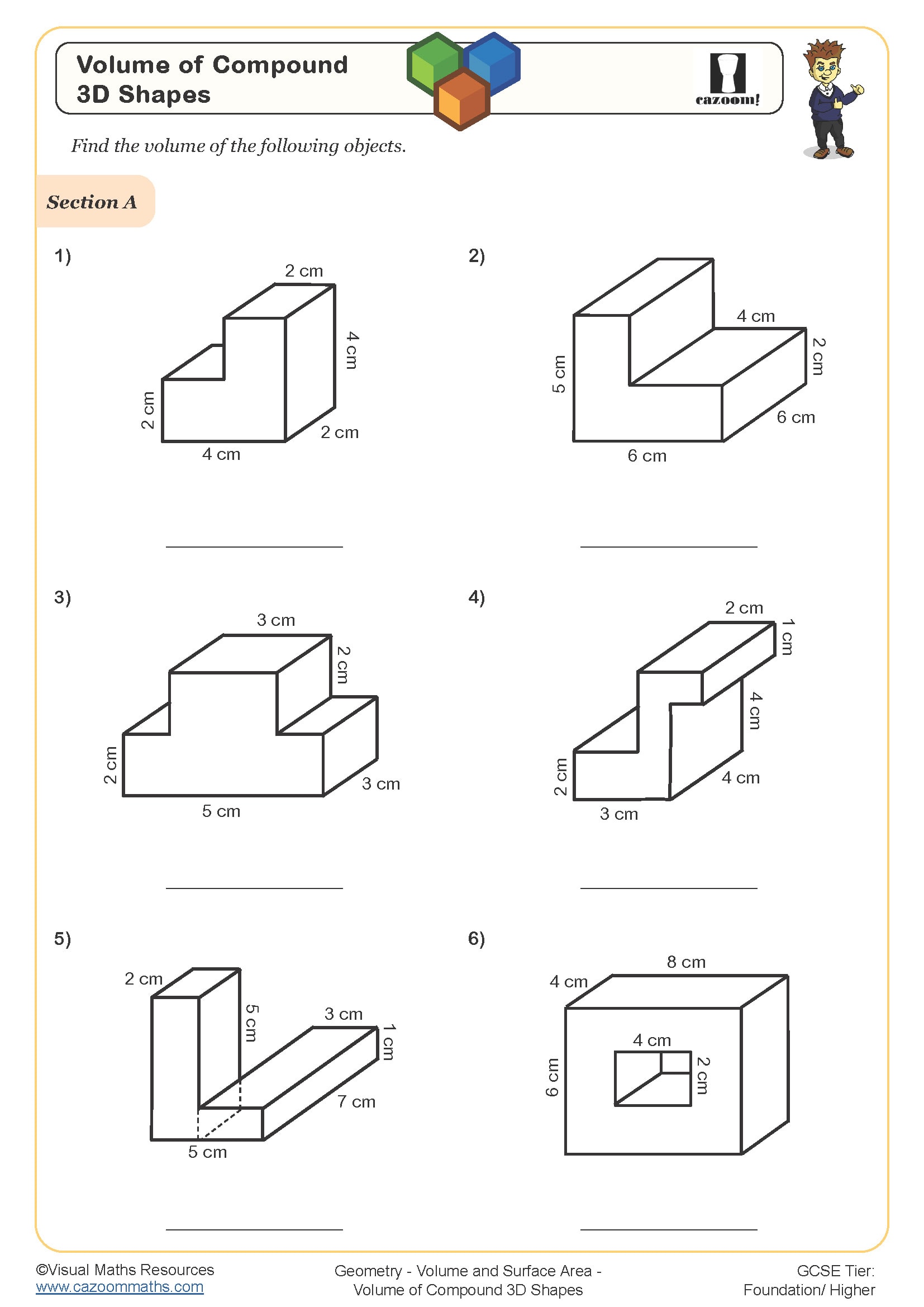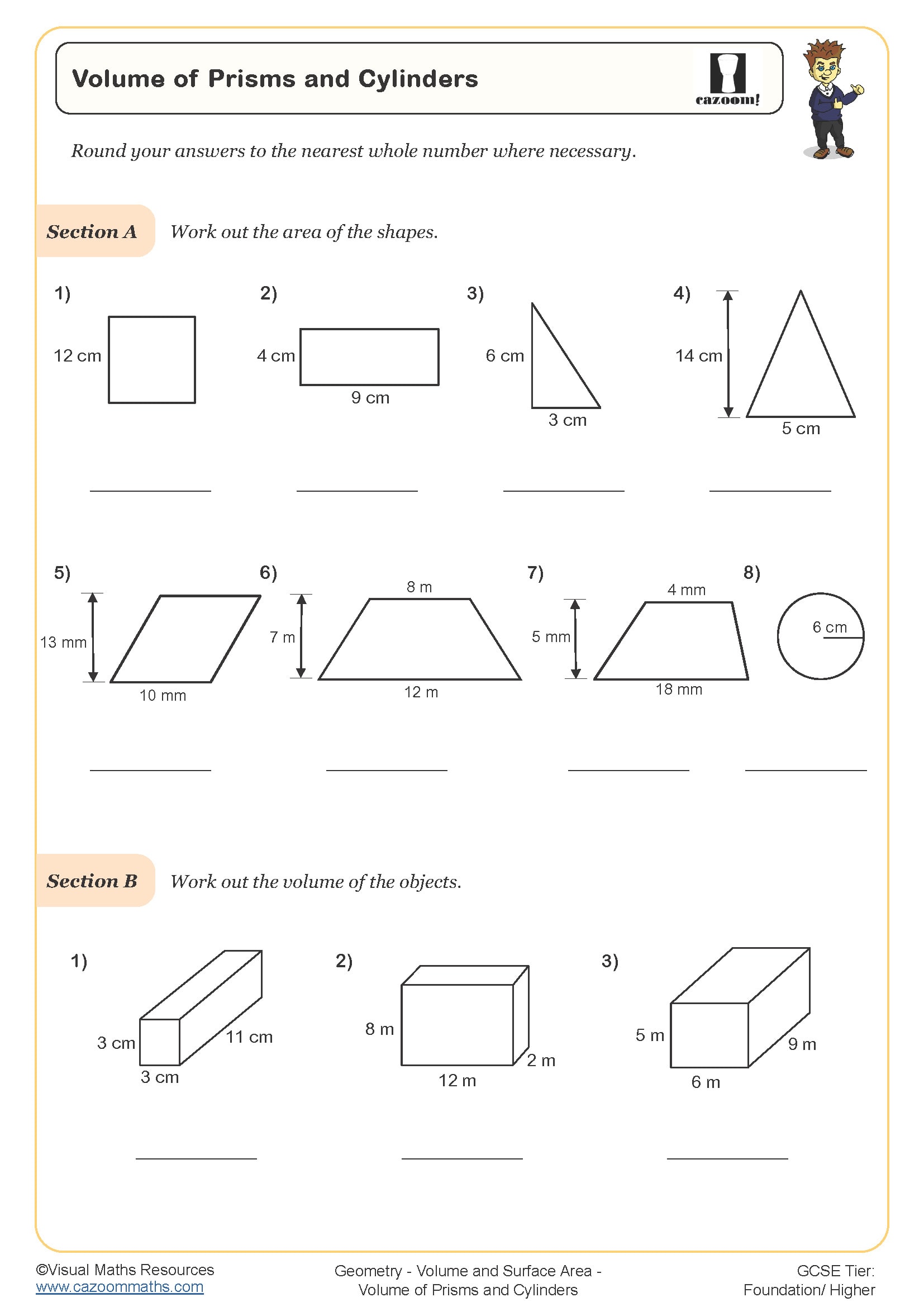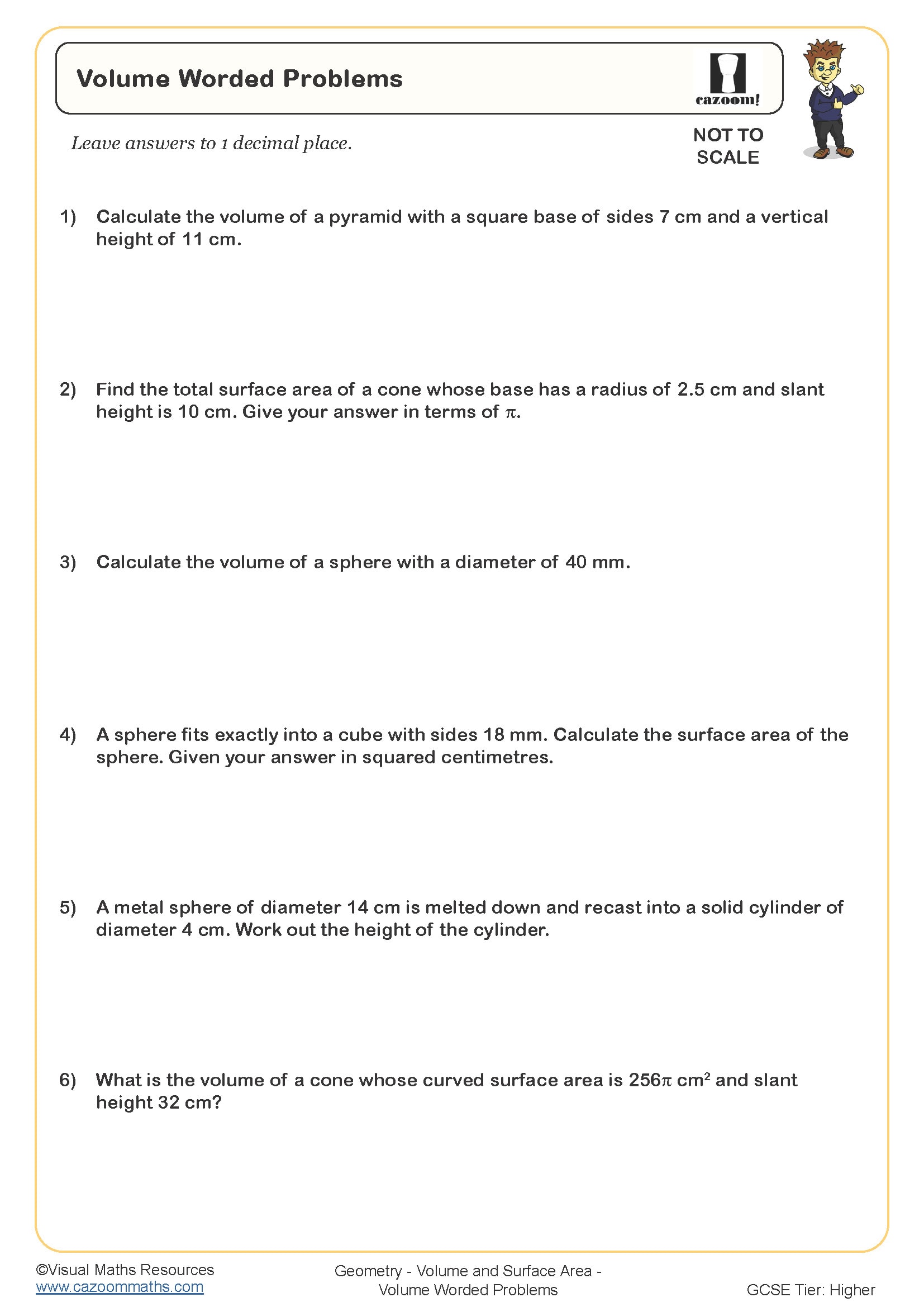Year 9 Surface Area and Volume Worksheets
Are You Teaching Geometry the Best Way? Try Our Ready-to-use KS3 Worksheets
Moving from Year 8's foundational work with prisms and cylinders, Year 9 students encounter spheres, cones, and composite shapes that demand both visualisation skills and algebraic thinking. Students who practice three-dimensional problems will develop their mental rotation skills, which become essential for advanced geometry. The transition from basic rectangular calculations to curved surfaces forces students to depend on formulas instead of counting faces. The educational sequence leads to physics concepts about pressure and density while creating a foundation for trigonometric learning. Students who understand these concepts will achieve better results in all spatial reasoning assessments.
Specific learning benefits include:
• Master calculating with spheres and hemispheres
• Develops composite shape decomposition strategies
• Strengthens formula selection and application
• Builds a multi-step problem methodology
• Improves accuracy with unit conversions
• Enhances spatial visualisation abilities
• Connects algebra to geometric contexts
Core Maths Areas Strengthened by Year 9 Surface Area and Volume Worksheets
The learning sequence of concrete models to pictorial representations to abstract formula application helps students develop a strong conceptual understanding, while the worked solutions show each calculation step in detail. The materials present students with advanced measurement-based problems that link their classroom work to fundamental principles. The materials achieve a balance between procedural skills and conceptual thinking through their organised problem progression.
The worksheets in this collection include:
• Surface Area of Cuboids — practising rectangular prism calculations with clear dimensions
• Volume of Prisms — applying cross-sectional area methods to various shapes
• Surface Area of Cylinders — calculating curved and circular face areas systematically
• Volume of Pyramids and Cones — understanding one-third relationships in pointed solids
• Surface Area and Volume of Spheres — working with radius-based formulae confidently
• Composite 3D Shapes — breaking complex objects into manageable components
• Problem Solving with Surface Area and Volume — tackling multi-context challenges requiring formula selection
• Units and Scale Factors — converting between metric units in three dimensions
The Parents’ Guide to Stress-Free Homework With Year 9 Surface Area and Volume Activities
The process of classroom implementation becomes simple when materials include different levels of student readiness and clear progressions through increasingly complex content. The worksheets present various starting points which enable students with different abilities to tackle suitable mathematical content at the same time. The organised structure of the materials saves time for preparation while maintaining academic standards for students at every skill level. The answer sheets provide both method marks and final solutions, which help teachers and students understand the assessment criteria. The educational content in these worksheets aligns with the standard Year 9 curriculum plans, enabling teachers to use them for regular classroom work, homework, and additional support sessions. The uniform design of worksheets enables students to concentrate on mathematical problems instead of spending time understanding different sets of instructions. The Cazoom Maths resources work well with interactive whiteboards and printed handouts because they provide teachers with adaptable teaching options.
Architecture to Sports: Real-World Applications of Surface Area and Volume Mathematics
The ability to measure three dimensions enables people to solve various real-world problems which require spatial understanding. The ability to perform mathematical calculations in three dimensions serves as a fundamental requirement for various professional roles that include design project material estimation and logistics container optimisation.
• Architecture and construction planning for material estimates
• Product packaging design and cost optimisation
• Swimming pool maintenance and chemical calculations
• Greenhouse planning for maximum growing space
• 3D printing filament requirements and time estimates
• Sports equipment specifications and performance analysis
• Environmental science volume calculations for habitats
• Engineering prototype development and testing parameters
